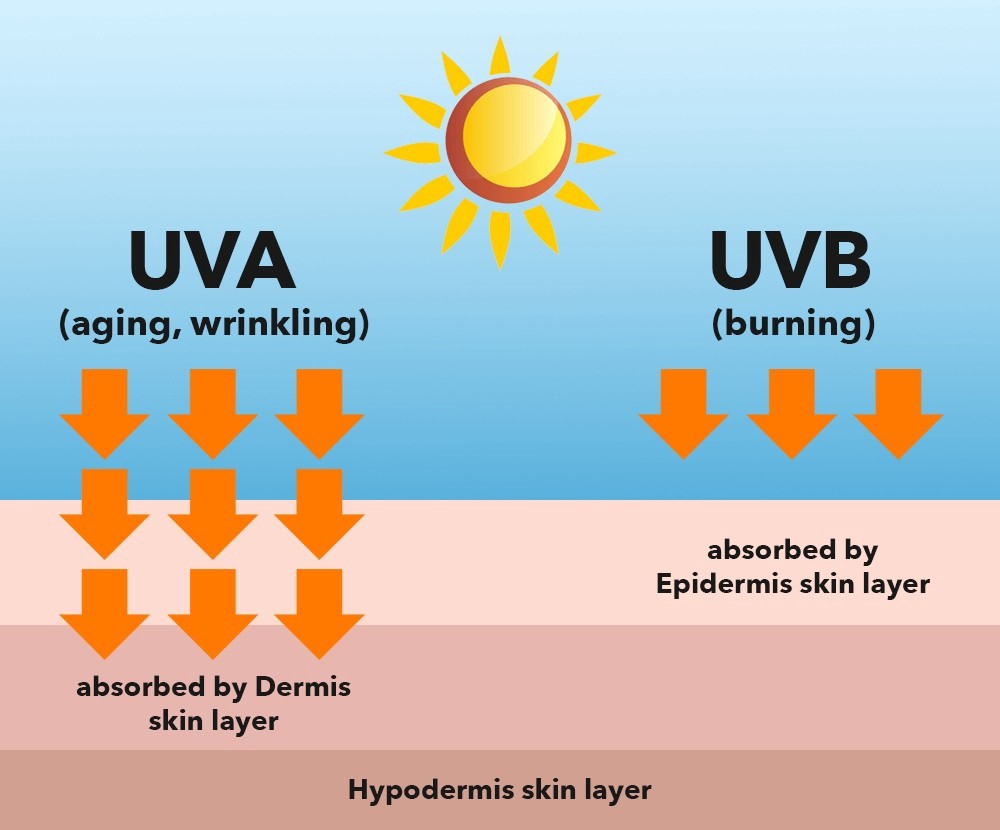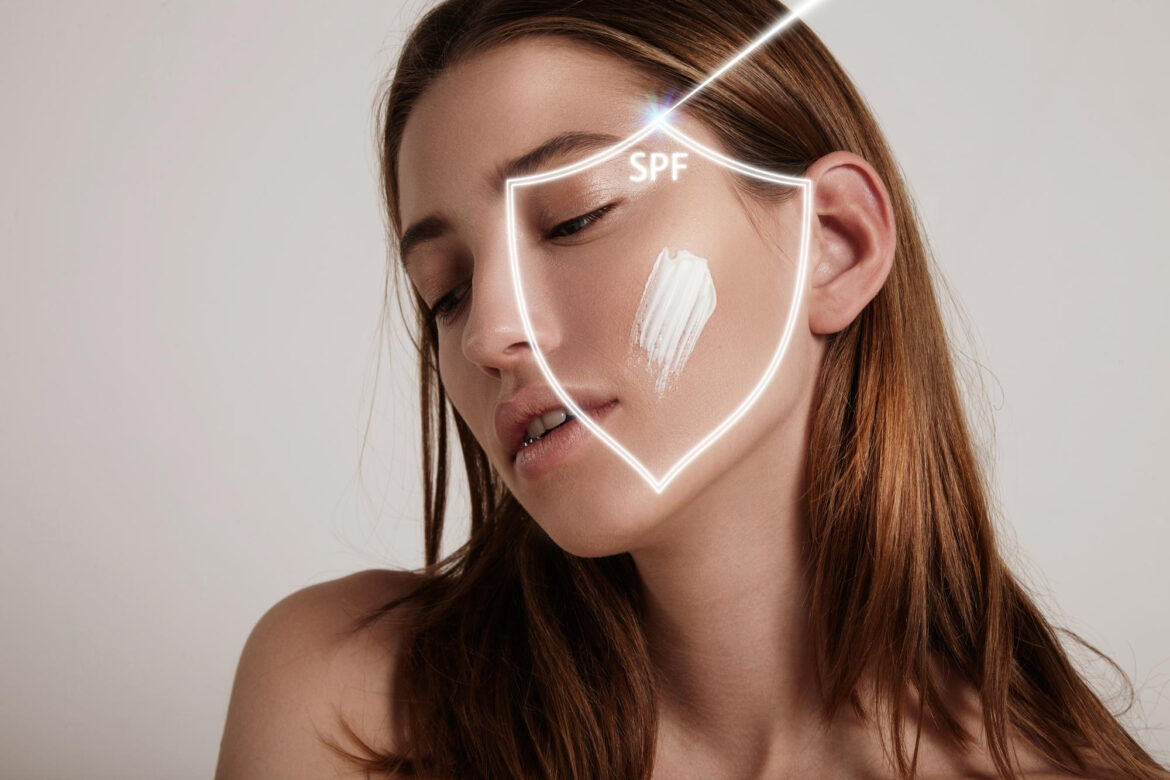We all love a bit of sunshine! It warms our bodies, lifts our spirits, and even helps our bodies produce essential Vitamin D. But too much sun exposure can be damaging, leading to sunburn, premature ageing, and even skin cancer. So, the question remains: Do I really need sunscreen every day? This guide dives into the world of sun protection, helping you make informed choices for healthy and sun-safe skin.
Also Read: Should I Wash My Face With Cold Water or Hot Water? The Great Face Wash Debate
Understanding Sun Damage: The UVA and UVB Rays
The sun emits various rays, but two main types affect our skin:
- UVA Rays: UVA rays penetrate deep into the skin’s dermis layer, causing premature ageing, wrinkles, and loss of skin elasticity. They are present year-round, even on cloudy days.
- UVB Rays: UVB rays are responsible for sunburns and tanning. They are strongest during peak sun hours (typically 10am to 4pm) and vary in intensity throughout the year.

Sunscreen Explained: Your Shield Against Sun Damage
Sunscreen acts as a protective shield, absorbing or reflecting some of the sun’s UV rays to prevent skin damage. Here’s what you need to know:
- SPF (Sun Protection Factor): This number indicates the level of protection against UVB rays. Higher SPF offers greater protection, but it’s not a perfect shield. Dermatologists recommend using a broad-spectrum sunscreen with SPF 30 or higher for daily use.
- Broad Spectrum: Look for sunscreens labelled “broad spectrum” as they protect against both UVA and UVB rays.
- Water Resistance: If you’ll be sweating or swimming, choose a water-resistant sunscreen. Reapply after swimming or excessive sweating, as per the product’s instructions.

Do I Need Sunscreen Every Day? Here’s the Breakdown
Whether you need sunscreen every day depends on several factors:
- Skin Type: Fairer skin with less melanin (the pigment that gives skin its colour) is more susceptible to sun damage. People with fair skin tones generally need sunscreen every day, even on cloudy days.
- Sun Exposure: If you spend any time outdoors, even for short periods, sunscreen is recommended. UVA rays are present year-round, so don’t be fooled by cloudy skies.
- Season and Location: The sun’s intensity varies throughout the year and depending on your location. Generally, sunscreen is more crucial during summer months and in places closer to the equator.
- Altitude: Sun exposure is more intense at higher altitudes, so sunscreen is essential when spending time in mountains or at ski resorts.
Also Read: Stressed Skin? 8 Ways Your Skin Reacts to Stress and How to Help?
Sunscreen Savvy Tips: Maximizing Sun Protection
Here are some handy tips to ensure you’re getting the most out of your sunscreen:
- Apply generously: Most people don’t apply enough sunscreen. Aim for a thick, even layer on all exposed skin, including your face, ears, neck, lips, and tops of the feet.
- Don’t forget often-missed spots: Apply sunscreen to your ears, lips (use a lip balm with SPF), the tops of your feet, and the backs of your neck and hands.
- Reapply regularly: Sunscreen needs to be reapplied every two hours, especially after swimming, sweating heavily, or toweling off.
- Seek shade: When possible, seek shade during peak sun hours (typically 10am to 4pm). Umbrellas, hats with wide brims, and sun-protective clothing offer additional protection.
- Sunglasses are essential: Protect your eyes from sun damage by wearing sunglasses that block UVA and UVB rays.
Sunscreen Myths Debunked: Separating Fact from Fiction
There are many misconceptions surrounding sunscreen. Let’s clear them up:
- Myth: Sunscreen prevents me from getting a tan. Fact: Sunscreen protects you from sunburn, but you can still tan with lower SPF sunscreens. However, a safe tan is actually sun damage, and it’s best to achieve a healthy glow with self-tanning lotions.
- Myth: I don’t need sunscreen on cloudy days. Fact: UVA rays, which cause premature ageing, penetrate clouds. Sunscreen is essential for daily sun protection, regardless of the weather.
- Myth: A higher SPF means I don’t need to reapply. Fact: All sunscreens need to be reapplied every two hours, regardless of SPF.
- Myth: A little bit of sun exposure is healthy for Vitamin D production. Fact: You can get sufficient Vitamin D from short periods of unprotected sun exposure (around 10-15 minutes) or through a healthy diet rich in Vitamin D sources like oily fish, eggs, and fortified milk.
Sunscreen Safety: Choosing the Right Product for You
Sunscreens come in various forms, lotions, creams, sprays, and even sticks for easy application on the face. Here’s a quick guide to choosing the right sunscreen for you:
- Skin Type: For oily skin, opt for lightweight, oil-free lotions or gels. Dry skin benefits from thicker creams. Sensitive skin might require mineral-based sunscreens with zinc oxide or titanium dioxide.
- Activity Level: If you sweat a lot during exercise, choose a water-resistant, sports sunscreen. For everyday wear, a lotion or cream might suffice.
- Lifestyle: Sunscreen sprays are convenient for quick application on the go, but ensure even coverage. Sunscreen sticks are great for reapplying to the face throughout the day.
Sunscreen and Children: Special Considerations
Children’s skin is more delicate and burns more easily than adult skin. Here are some essential points to remember:
- Use sunscreen with SPF 30 or higher for children.
- Look for broad-spectrum, water-resistant sunscreens.
- Apply sunscreen generously and reapply frequently, especially after swimming or sweating.
- Seek shade for babies and young children, especially during peak sun hours.
- Consider sun-protective clothing, hats with wide brims, and sunglasses for additional protection.
Sun Safety Beyond Sunscreen: A Multi-Pronged Approach
Sunscreen is a crucial line of defense, but it’s not the only way to stay sun-safe. Here are some additional tips:
- Seek shade: Whenever possible, take advantage of shade, especially during peak sun hours (10am to 4pm). Bring an umbrella to the beach or park for extra protection.
- Sun-protective clothing: Clothing with a tight weave and darker colours offers some protection from the sun’s rays. Look for clothes labelled with Ultraviolet Protection Factor (UPF).
- Hats with wide brims: Hats shield your face, neck, and ears from the sun. Choose a hat with a wide brim for maximum coverage.
- Sunglasses: Protect your eyes from sun damage by wearing sunglasses that block UVA and UVB rays. Look for sunglasses labelled with UV protection.
Embrace the Sun Safely: Enjoying the Outdoors Without Risks
Sunshine is a wonderful part of life, but it’s essential to be sun-savvy. By incorporating these tips into your daily routine, you can enjoy the outdoors safely and protect your skin from harmful UV rays. Remember, sun protection is an ongoing practice, not just a summertime concern. Make healthy habits like daily sunscreen use a part of your life for long-lasting, healthy skin.
Additional resources you might find helpful:
- The British Association of Dermatologists: https://www.bad.org.uk/ – Provides reliable information on sun protection and skin health.
- The National Health Service (NHS): https://www.nhs.uk/conditions/vitamins-and-minerals/vitamin-d/ – Offers advice on sun safety and Vitamin D.
- The Skin Cancer Foundation: https://www.skincancer.org/ – Provides valuable resources on skin cancer prevention and sun protection.
So, the next time you step out into the sunshine, remember to be sun-safe! With a little preparation and the right tools, you can enjoy the outdoors worry-free and keep your skin healthy for years to come.
Do I Really Need Sunscreen Every Day? – FAQs
This FAQ dives deeper into some common questions people have about sunscreen and daily sun protection:
1. I have a dark skin tone. Do I still need sunscreen?
Skin tone plays a role in sun sensitivity, but everyone is susceptible to sun damage. While people with darker skin tones have more melanin (the pigment that gives skin its colour) and may burn less easily, UVA rays can still penetrate the skin and cause premature ageing and wrinkles. A broad-spectrum sunscreen with SPF 30 or higher is recommended for daily use, regardless of skin tone.
2. Isn’t some sun exposure good for Vitamin D production?
Yes, it’s true! Small amounts of unprotected sun exposure (around 10-15 minutes) can stimulate your body to produce Vitamin D. However, excessive sun exposure is detrimental and can outweigh the benefits. You can also get sufficient Vitamin D through a healthy diet rich in Vitamin D sources like oily fish, eggs, and fortified milk.
3. Will sunscreen clog my pores?
Some sunscreens, particularly thicker creams or oil-based formulas, might clog pores for people with oily or acne-prone skin. Look for oil-free, non-comedogenic sunscreens that are less likely to clog pores. Gel or water-based formulas are also good options for oily skin.
4. What if it’s cloudy outside? Do I still need sunscreen?
Absolutely! UVA rays, which cause premature ageing and wrinkles, are present year-round and can penetrate clouds. Sunscreen is essential for daily sun protection, regardless of the weather or how cloudy it might seem.
5. Isn’t a higher SPF sunscreen better?
While higher SPF sunscreens offer greater protection from UVB rays (the rays that cause sunburn), it’s not a perfect shield. All sunscreens need to be reapplied every two hours for optimal protection. Dermatologists recommend using a broad-spectrum sunscreen with SPF 30 or higher for daily use. SPF 50+ sunscreens might be beneficial for extended periods outdoors or during intense sun exposure, like at the beach or while skiing.
6. Can I just reapply sunscreen once and be good for the whole day?
Unfortunately, no. Sunscreen effectiveness diminishes over time due to sweating, swimming, or simply being on your skin. Reapply sunscreen every two hours, and more frequently if you’re sweating or swimming.
7. What are some alternatives to sunscreen?
Sunscreen is the most effective way to protect your skin from sun damage. However, you can combine sunscreen use with other sun-safe practices:
- Seek shade: Whenever possible, take advantage of shade, especially during peak sun hours (10am to 4pm). Bring an umbrella to the beach or park for extra protection.
- Sun-protective clothing: Clothing with a tight weave and darker colours offers some protection from the sun’s rays. Look for clothes labelled with Ultraviolet Protection Factor (UPF).
- Hats with wide brims: Hats shield your face, neck, and ears from the sun. Choose a hat with a wide brim for maximum coverage.
- Sunglasses: Protect your eyes from sun damage by wearing sunglasses that block UVA and UVB rays. Look for sunglasses labelled with UV protection.
8. Are sunscreen sprays effective?
Sunscreen sprays can be convenient for quick application on the go, but they have some drawbacks. It’s easy to miss spots when spraying, and inhalation of sunscreen particles can be a concern. When using sunscreen spray, ensure even coverage and reapply frequently, just like other sunscreen forms.
9. Sunscreen seems greasy and uncomfortable. Are there any alternatives?
There are many sunscreen options available to suit different preferences. For greasy skin, look for oil-free, non-comedogenic formulas like lotions or gels. Mineral-based sunscreens with zinc oxide or titanium dioxide tend to be less greasy and can be a good choice for sensitive skin. Experiment with different types of sunscreen to find one that feels comfortable for you.
10. Is sunscreen safe for babies and young children?
Sunscreen is crucial for protecting children’s delicate skin from sun damage. However, their skin is more sensitive than adults’. Here are some tips for using sunscreen on children:
- Use sunscreen with SPF 30 or higher specifically formulated for babies and children.
- Look for broad-spectrum, water-resistant sunscreens.
- Apply sunscreen generously and reapply frequently, especially after swimming or sweating.
- Seek shade for babies and young children, especially during peak sun hours.
- Consider sun-protective clothing, hats with wide brims, and sunglasses for additional protection for children.
